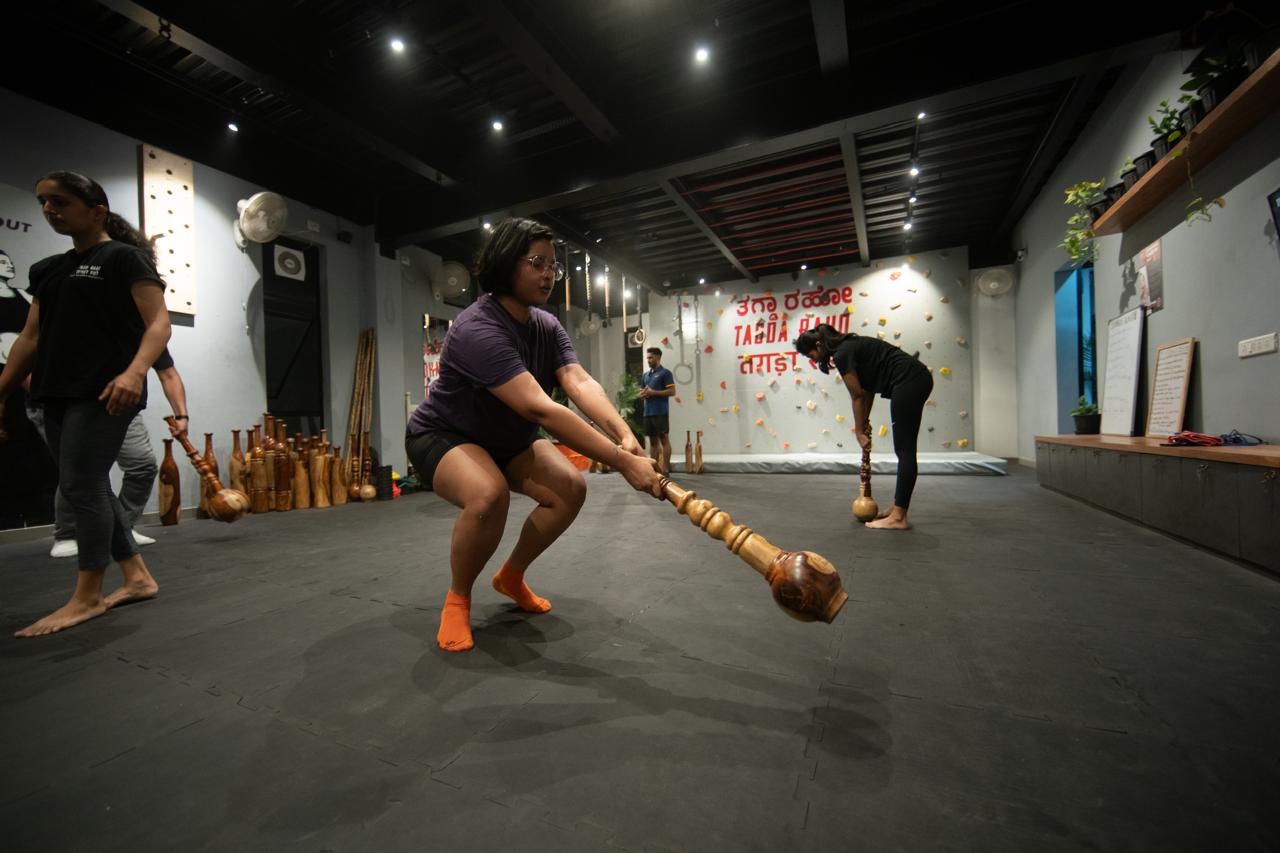Introduction
If you could measure one thing today to predict how strong and independent you’ll be decades from now, what would it be?
It’s not your body fat.
It’s not your blood pressure.
It’s not even your squat max.
It’s your grip strength.
Research from The Lancet and the British Medical Journal has confirmed: grip strength predicts longevity better than many traditional health markers. Weak grip means higher risk of injury, disability, and early mortality. Strong grip? It’s linked to resilience, vitality, and independence.
And the best way to build it? Mace training—alongside Indian clubs, gada workouts, and functional fitness tools.
The Science: Grip Strength and Longevity
-
The Lancet Study (2015)
-
Over 140,000 people tracked across 17 countries.
-
Weak grip strength predicted higher risk of cardiovascular disease and early death—stronger than high blood pressure.
🔗 https://www.thelancet.com/journals/lancet/article/PIIS0140-6736(14)62000-6/fulltext
-
-
Journal of Gerontology
-
Found that higher grip strength correlates with better brain and nervous system function in older adults.
🔗 https://academic.oup.com/biomedgerontology/article/74/4/575/5239720
-
-
British Medical Journal
-
Concluded that grip strength is a simple, powerful marker of overall health, disability risk, and mortality.
🔗 https://www.bmj.com/content/351/bmj.h3625
-
Grip isn’t just about hands—it’s about total body integration: muscles, joints, tendons, and the nervous system.
Why Mace Training is the Ultimate Grip Builder
While farmer’s carries and pull-ups build grip, mace training (gada or steel mace) takes it to another level. Why?
-
Off-center weight distribution: Unlike a dumbbell, a mace loads all its weight at one end. Every swing forces your forearms, wrists, and fingers to stabilize.
-
Dynamic, rotational patterns: Club swinging and mace workouts train grip through continuous movement, not static holds—closer to real life.
-
Functional carryover: A strong grip from mace training translates to better lifts, combat sports, yoga, climbing, and even daily tasks like carrying groceries.
-
Joint health + longevity: Mace training doubles as shoulder mobility work. The circular motions keep joints lubricated and tendons resilient.
This is why wrestlers in India trained with gadas for centuries—to build grip that lasts a lifetime.
How to Train Grip With a Mace
Here’s a simple mace training workout (10–15 minutes, anywhere in the USA):
-
360 Mace Swings – 3 sets x 10–15 reps per side
-
Builds crushing grip and bulletproof shoulders.
-
-
Mace Mills – 2 sets x 10 reps
-
Circular patterns that strengthen wrists, elbows, and core.
-
-
Offset Mace Press – 3 sets x 8 reps each side
-
Uneven loading challenges grip and stability.
-
-
Farmer’s Carry with Mace – 3 rounds of 40–60 seconds
-
Grip + posture + core endurance.
-
-
Mace Pull-Throughs – 2 sets x 15 reps
-
Teaches control and grip endurance through extended time under tension.
-
Beginner to Advanced Progression
-
Start Light: 7–10 lb mace for learning technique.
-
Intermediate: 15–20 lb mace for strength endurance.
-
Advanced: 25+ lb gada or steel mace for raw power and grip dominance.
Tagda Raho’s authentic Indian rosewood clubs and gadas are perfect for building the foundation before progressing to heavier mace training.
Why This Matters in the U.S. Fitness Scene
In the USA, most gyms are filled with barbells and machines—but functional fitness tools like Indian clubs, maces, and gadas are still rare. That’s a gap.
-
CrossFit gyms can use mace training for mobility + grip strength.
-
Yoga studios can introduce Indian clubs as a natural strength extension to flexibility practices.
-
Athletes can bulletproof their shoulders for performance longevity.
-
Everyday movers can future-proof their independence by training grip.
Conclusion
If grip strength predicts how long and how well you’ll live, the smartest investment in your health is to train it now.
And the most effective, time-tested way? Mace training and Indian club swinging.
That’s why Tagda Raho USA exists—to bring these traditional Indian fitness tools (gada, mace, mudgar, clubs) into the modern U.S. and Canadian fitness market. Not just for athletes, but for anyone who wants strength that lasts.
Stay Strong. Stay Rooted. Stay Tagda.


Share:
Not Just Tradition: Peer-Reviewed Studies on Indian Clubs Training You Need to Know
The Recovery Gap: Why Mobility Is the Most Overlooked Part of Strength Training